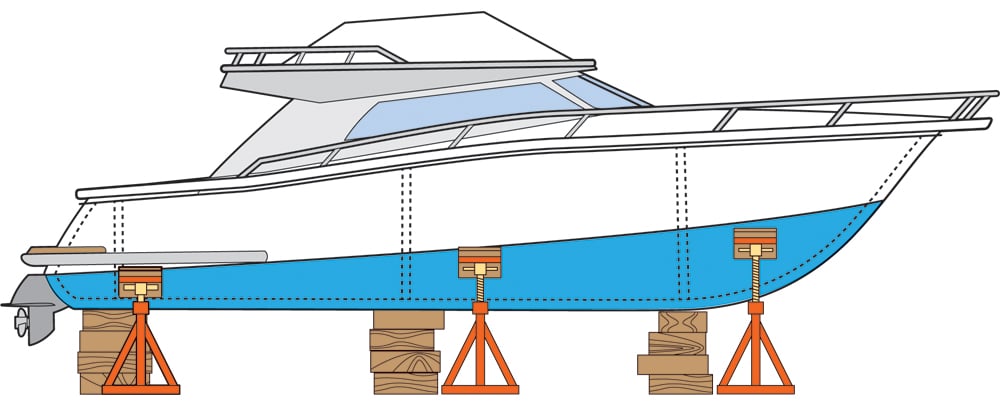
“Blocking” Your Boat
How your boat is “blocked” once it’s off the Travelift or the trailer is critical. While a boat can be blocked properly on cement blocks, jack stands (aka “boat stands” or “poppets”) are the pro’s choice. Some boat manufacturers recommend positioning for blocks and jack stands, so check the owner’s manual or with the builder. Generally, keel blocks should be positioned under internal bulkheads to avoid stressing the boat. Improper blocking can lead to gelcoat stress cracks, damaged stringers, misaligned engines and other problems. Check for proper blocking under your boat or that new one you’re considering.
Be Well Grounded
The ground should be solid and reasonably flat. Regardless of the surface, place the stands on plywood bases to spread the load and prevent the stands from settling. Even asphalt will give way, especially if it gets hot.
Keel First
The keel takes all the weight, so it gets supported first. You can use concrete blocks with wood on top, but special poppets called keel stands with threaded rods are more convenient. Keel stand pads screw up flat. A minimum of two stands will enable you to level the boat fore and aft. Use one stand for every 10 feet of length along the keel.
Balancing Act
Position one adjustable stand every eight feet with a minimum amount of threaded rod exposed. The base should be parallel to the waterline and as far out from the keel as possible, generally tucking the pad into the chine. Thread the pads up, one side at a time, and finish when they are secure against the hull and the boat is level abeam.









